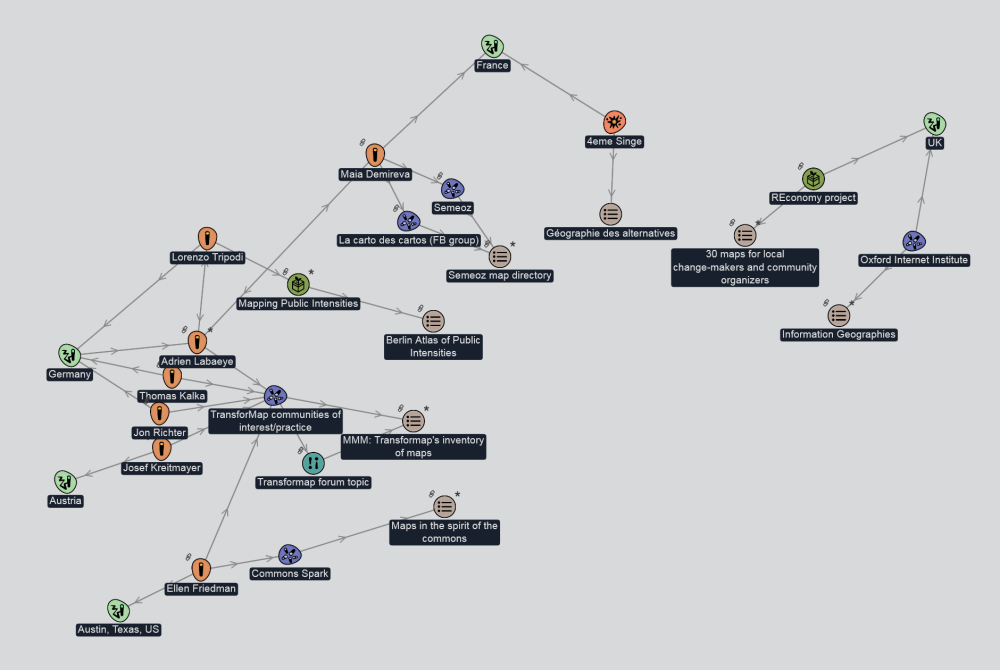In its map exploration, the Transformap collective has collected over 200 maps, but also atlases. An atlas lists, hopefully displays, maps. In our TransforMap inventory, we have marked them as ‘Meta’. Here are some pages that point to interesting maps. Some* do it beautifully.
English-speaking
- Shareable’s community maps. Those 72 maps focus on sharing and are the results of Shareable’s Map Jams, a global annual event encouraging local sharing activists to collaboratively map the sharing movement in their city. Maps are listed along regions.
- The Commons Spark’s inventory of “maps in the spirit of the commons” compiles over 250 maps. They can be vizualized in a spreadsheet or in a mindmap*. The maps have been sorted along a two-level taxonomy, helping the reader navigate that great diversity.
- The Atlas of Social Maps collected over 50 examples of maps in a google doc, with systematic background information about each map such as tools used, geographic coverage, map purpose. A good report about the database can be viewed here.
- The Sharing Community Maps by Shareable are a collection of mapping efforts triggered by the Map Jam campaign. Thanks to its extensive mapping guidebook, Shareable enabled local communities around the world to get a better understanding of the shareing economy in the city.
- “30 maps to help local change-makers and community organisers” by the REconomy Project (UK focus) is a list of grassroots maps (urban harvesting, timebanking, landshare) as well other more top-down maps related to sustainability (sea-level rise, wind potential, temperatures rise, etc.).
- The Berlin Atlas of the Mapping Public Intensities project displays 15 maps ranging from critical cartographies or alternatives spatial representations of Berlin.
- Special mention: the Information Geographies atlas* of the Oxford Internet Institute does not focus on alternatives, but does a great job at displaying maps and deserves a special mention.
French-speaking
- the SEMEOZ website* that make an inventory of all “constructive actions” and their maps. Maia Dereva, the person behind that website, has collected over 160 French-speaking maps as of February 2016. Each map has an online page with a keyword, a picture and a link. The website is colourful, easy to navigate and backed by an association dedicated (from its by-laws) to the common-good.
- a page of “Le 4eme Singe”, a website focusing on alternative news, titled “Géographie des alternatives”*. It displays over 20 French-speaking maps from fablabs, the Colibris movement, co-working, solidarity agriculture, alternative education, heterotopias, etc.
- another French-speaking page spotted over 40 maps of alternatives covering mostly the French territory but also a few global maps.
[You think somethings is missing? Contact me at adrienlabaeye [a] gmail [.] com]
To improve our understanding of what kind of atlas are out there and who is behind, I prepared a mind map that gives an overview of the landscape:
